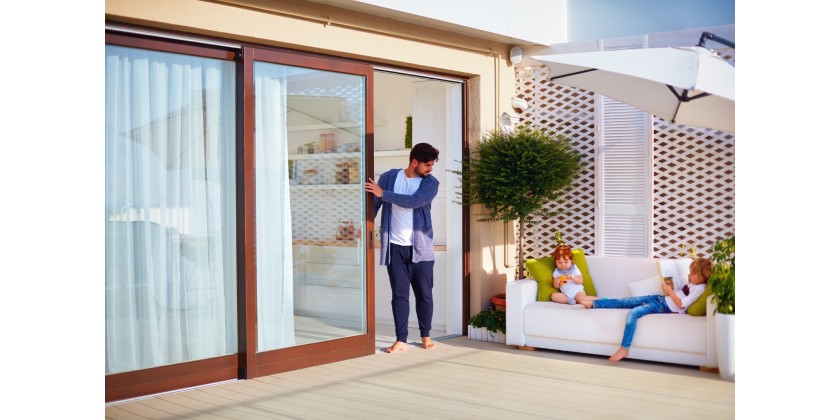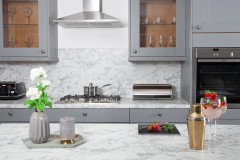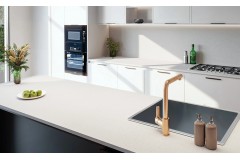
Problems with your sliding door can become very costly. Not just the cost of repair, but the potential cost of your energy bills increasing. A sticky sliding door may be your first sign of a problem that could get worse.
The longer you wait before fixing it, the more potential damage it could cause. A sticky sliding door might damage the frame or become stuck to the point of replacement.
Before things get any worse, you should do a little investigating of your own. This guide can help you identify the problem, fix it, or at least minimize the costs of repair. Get unstuck with these expert tips.
The Cause of a Sticky Sliding Door
Learning why your door is sticking in the first place can save you from jumping to conclusions. You may be able to avoid expensive repairs or renovations if you can find out why.
There are some common issues with sliding glass doors you can look out for.
Door Alignment
The gap between the track that your door slides on can't be too tight or it will be too hard to move. There is always a little give that allows the door to move a bit. If the door happens to veer off in either direction, then it will meet more resistance.
You can adjust this alignment to see if it is the cause of the sticking. You just have to lift the door up enough to recenter its position. You'll know if this was the source of the problem when the wheels pop into position in the centre of the track.
Usually, the cause of this problem is from heavy handling of the door and slamming into the frame. If the alignment is really bad, you may need to remove the door completely off the track to recenter it. To do this, you will need to access the roller adjustment (instructions are below) until the door is sitting on the track.
Dirt and Foreign Objects
This is probably the most common cause for track sticking. There's a lot of things that can get caught up inside the tracks. The worst case scenario is if a child pushes something underneath.
Over time, dirt can clog up the rollers and provide a lot of resistance. The dirt may not even be visible on the track itself. You'll need to do a bit of flushing of the underside of the door to get things rolling again.
Preventative care is the best way to prevent sticking on dirt and debris. You should remember to sweep and wipe in the tracks as you're cleaning. Depending on the amount of foot traffic you have, this might need done daily.
Some sliding door models are more susceptible to dirt buildup than others.
The Condition of the Rollers
The rollers underneath the door can be damaged and wear down over time. Sometimes they just need a little lubricant to return to smooth rolling again. All you need to do is take a can of WD-40 and spray it underneath the door.
If that doesn't work, the rollers very well could be damaged or broken. There could be a piece of roller sticking out and catching the sides.
The rollers themselves may be out of alignment, too. This can happen when the door comes off its track. They can be readjusted with a simple screwdriver.
If you take a look at the bottom end of the door, you should see a metal or plastic cap. You should see a circle outline of it where you'll need to access the roller adjuster. Take a butter knife or a steak knife to get in there and pry it off.
Once you have it out, you'll need a screwdriver to adjust a screw. This is what controls the height of the rollers. Turning it right or left will adjust the height by a range of about 1/4th of an inch. That may not sound like much, but it should be plenty to clear the door from the track.
Remember, the door might be hitting the top of the track, so don't just assume it's dragging on the bottom.
Bent and Out of Shape
An older sliding door may have been put through enough abuse to change the shape of the frame or track. It might be hard to tell from just looking at it, but if the door has flexed or bent in any way, it might be a loss.
Sliding wood doors could be warped enough to make it impossible to realign. Light metal alloys can also get bent out of shape pretty easily from bumps and accidental slams. There's only so much you can do to protect a sliding door from the elements and human error.
Wardrobe doors, for example, are subject to changes in temperature and humidity. This is something you have to be proactive about and invest in a humidifier. It's not like you'll be buying one just for your sliding doors, though. There's a lot of furniture that can be affected by humidity.
Finding the Right Sliding Doors
If it's time for you to replace your old, sticky sliding door, don't replace it with the same one. After trying all of the above tips and tricks, and it still doesn't stop sticking, start shopping for something better. Some sliding doors are made with materials that just aren't good for certain environments.
You may want to buy a new door made of premium wood, high-grade aluminum, or even vinyl. To get a better idea of which sliding doors you should consider and how much they will cost, call an expert. BBK Direct has been doing business for many years and has done hundreds of installations.
If you're interested in hearing a free quote and more information about other home renovations, contact us today. We offer free deliveries and discounts on most of our inventory for various order sizes.
Find what you're looking for at the UK's best home supply store!










Leave a Reply Cancel Reply
All fields are required